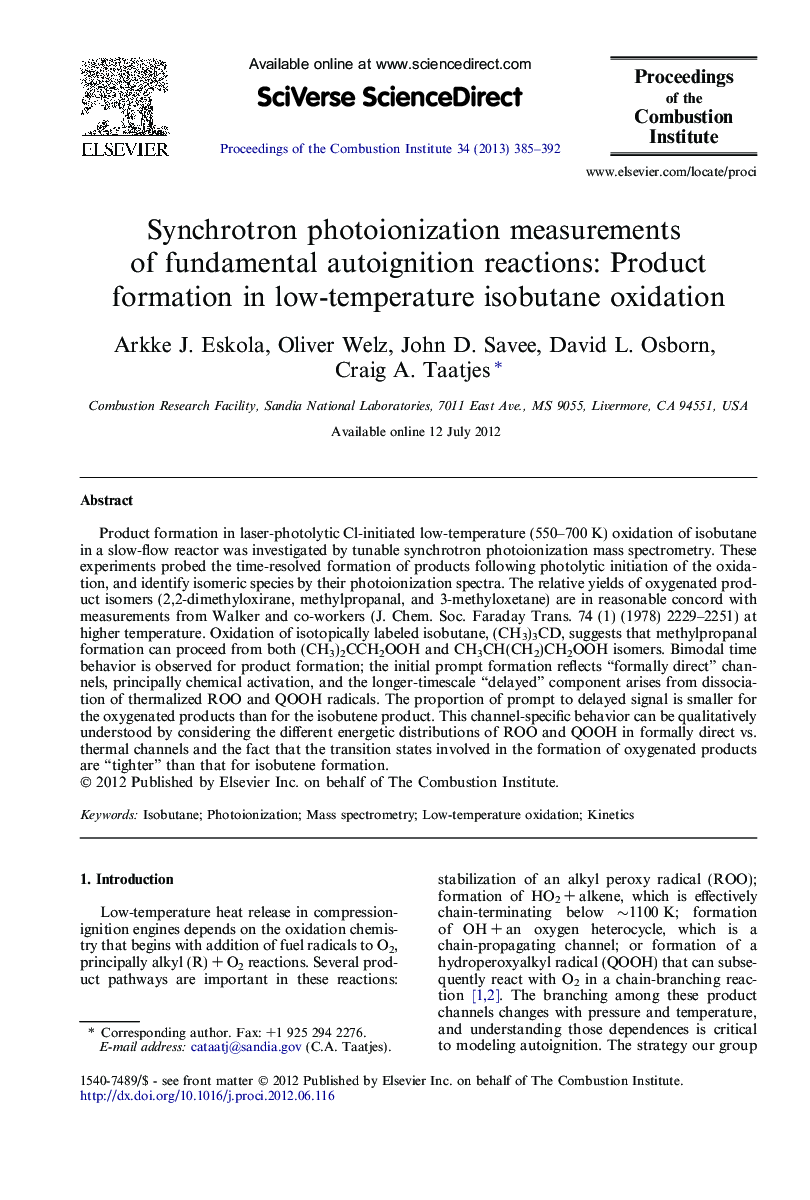| Article ID | Journal | Published Year | Pages | File Type |
|---|---|---|---|---|
| 241138 | Proceedings of the Combustion Institute | 2013 | 8 Pages |
Product formation in laser-photolytic Cl-initiated low-temperature (550–700 K) oxidation of isobutane in a slow-flow reactor was investigated by tunable synchrotron photoionization mass spectrometry. These experiments probed the time-resolved formation of products following photolytic initiation of the oxidation, and identify isomeric species by their photoionization spectra. The relative yields of oxygenated product isomers (2,2-dimethyloxirane, methylpropanal, and 3-methyloxetane) are in reasonable concord with measurements from Walker and co-workers (J. Chem. Soc. Faraday Trans. 74 (1) (1978) 2229–2251) at higher temperature. Oxidation of isotopically labeled isobutane, (CH3)3CD, suggests that methylpropanal formation can proceed from both (CH3)2CCH2OOH and CH3CH(CH2)CH2OOH isomers. Bimodal time behavior is observed for product formation; the initial prompt formation reflects “formally direct” channels, principally chemical activation, and the longer-timescale “delayed” component arises from dissociation of thermalized ROO and QOOH radicals. The proportion of prompt to delayed signal is smaller for the oxygenated products than for the isobutene product. This channel-specific behavior can be qualitatively understood by considering the different energetic distributions of ROO and QOOH in formally direct vs. thermal channels and the fact that the transition states involved in the formation of oxygenated products are “tighter” than that for isobutene formation.
